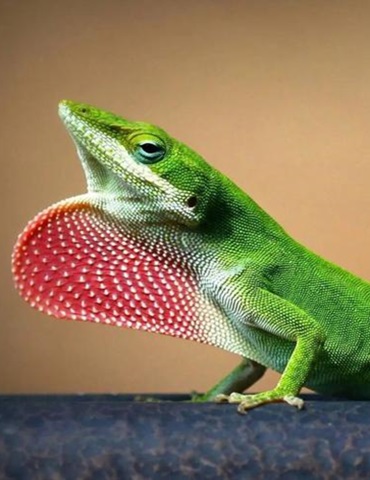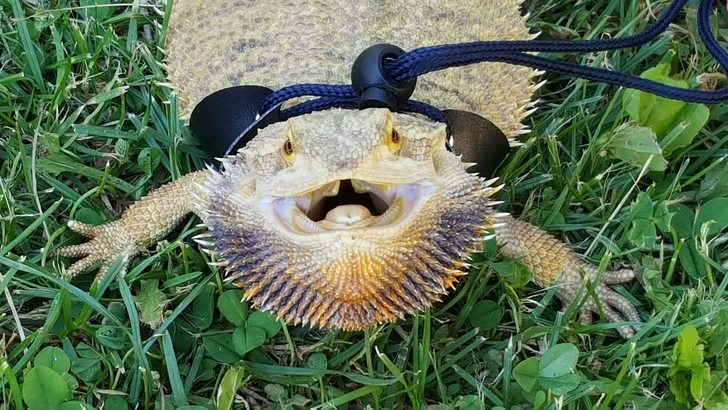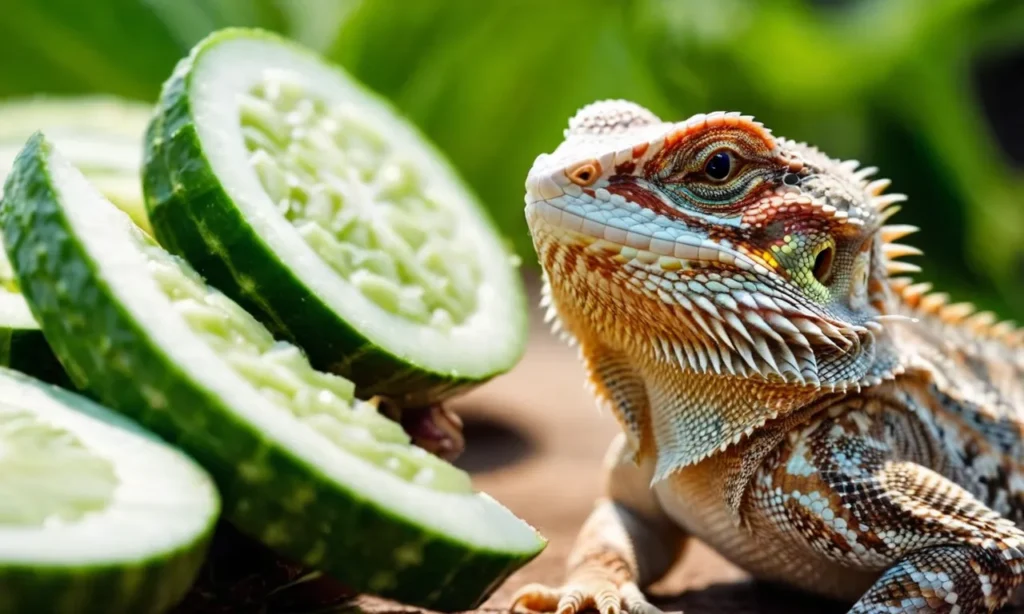The Green, also known as Green, belongs to the genusof the family. It is primarily found in North America and has two subspecies: Rhacodactylus leachianus leachianus and Rhacodactylus leachianus henkeli.
Greenis a large arboreal lizard, with a body length of about 12-45 centimeters. They have wide toes, sharp claws, and small hooks on their toe pads, which are advantageous for climbing and even allow them to move quickly on extremely smooth surfaces. Their body color is variable, ranging from brown or yellow to several shades of green. Males often have large red or yellow folds on their necks. The Green can reach a length of 18 centimeters and possess a pink dewlap (throat fan). Males have a red or yellow, inflatable dewlap on their throats, while females have a paler throat fan, usually light green with a blue-green upper part and faint black stripes across the upper part.
Their lifespan is typically 4 to 6 years, with about 3 years in the wild. Greenare diurnal, arboreal, and social creatures. They prefer to move, forage, and bask in the sun on trees, returning to burrows, tree hollows, or crevices in rocks to cool down and rest at night. Their diet mainly consists of insects, but they also consume flower leaves and fruits.
For care, a dry and well-ventilated environment is required. The size of the enclosure should be chosen based on the size of the lizard, generally, the length of the enclosure should be more than 2.5 times the lizard’s body length. The suitable temperature range is 25-30 degrees Celsius, and the humidity range is 40-60%. Heating lamps and humidifiers can be used to control temperature and humidity. Their diet mainly consists of insects and small reptiles, such as crickets, cockroaches, and mealworms. Adequate lighting is needed, and UVB lamps can be used to provide ultraviolet radiation.
Green have sharp teeth and claws, so caution is needed when handling to avoid bites and scratches. They are oviparous, with females laying one egg at a time, requiring a moist soil and leaves for incubation. Hatching takes 5-7 weeks. It is important to note that Green are exotic species that may impact local ecosystems, so it is necessary to understand relevant laws and regulations before keeping them and take appropriate measures to avoid environmental damage. Additionally, keeping Green requires experience and knowledge, so it is recommended to thoroughly understand the care knowledge and skills before keeping them.


